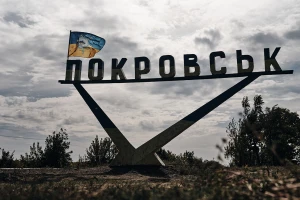
Leopard 1 in Ukraine: first task is to improve survivability of "cardboard" tank
Ukraine may soon become one of the main operators of Leopard 1 tanks. When the first information about the transfer of these tanks to Ukraine appeared, there were disputes about how expedient it was, given the moral and technical obsolescence of this main battle tank (MBT)
Oleksandr Kovalenko, a military expert, analyzed strengths and weaknesses of Leopard 1 tanks.
One of the reasons for criticizing the Leopard 1 was the fact that it had very weak armor, which could not protect the crew not only from an RPG-7 grenade launcher or armor-piercing 30-mm shot, but also from an artillery shell exploding nearby. A tank whose armor is pierced by shrapnel from an artillery shell? In a war zone where artillery fire is non-stop?
Armor was not the only one of the points of doubt. There were also questions about the life of the L7A3 cannon. Yes, this 105 mm rifled gun of 56 caliber is a formidable, sniper gun even by our modern standards and it is not without reason that the T-72/T-80/T-90 line should be afraid of it, but most of the Leopard 1s sent to Ukraine have either exhausted their service life or are at the limit.
There were also questions about the provision of ammunition, proportionally and without shortages, especially given the lack of mass production of rounds.
Few people remembered that the Leopard 1, after running a thousand kilometers off-road, required medium and more serious repairs, which could not always be carried out in the field.
Actually, we can go on for a long time, but still, these arguments will not change the fact that these difficult in all respects machines will become part of our tank potential. Depressing, but still. What to do?
In my opinion, the first task that should be addressed is to improve the survivability of the vehicle. For example, if you look at the vulnerable areas on the Leopard 1 turret, there are none. None, because the Leopard 1 turret itself is one continuous vulnerable zone, where 3 crew members out of 4 are located at once.
That is why I have repeatedly said that as a tank unit commander, I would never put my men in the Leopard 1. But I am not a tank unit commander, and it is possible and even necessary to solve the problem of weak armor of the vehicle, at least partially.
The Canadians had a good solution. This is a modification of the Leopard 1C2, equipped with an additional set of armor MEXAS-M with combined composite elements produced by the German company IBD Deisenroth Engineering.
By the way, here is another small deviation. Virtually every country that is a Leopard 1 operator has their tanks with small or very noticeable differences from the original. This, in turn, complicates their unification in maintenance and provision of similar parts or equipment.
A striking example of recent days is the purchase of 49 Belgian Leopard 1A5BEs for Ukraine. The Leopard 1A5BE features Belgian-made SABCA TI multichannel sights, an automated fire control system and a specific turret.
Now, in order to send a certain number of serviceable and combat-ready Leopard 1A5BEs, it is necessary to cannibalize a certain number of other Leopard 1A5BEs, because the unique Belgian equipment installed on them is no longer in production.
Actually, MEXAS-M is a NERA class armor, which is a passive protection against shaped charge ammunition.
MEXAS mounted armor consists of a ceramic layer and organotextolite based on high-strength Kevlar or Dynema fibers. The ceramic layer ensures the destruction of bullets and projectiles by distributing the kinetic energy over a larger area of the base, the residual energy is absorbed by the organotextolite layer. In terms of resistance, this type of combined armor, with the same weight as steel armor, surpasses it twice.
The tank with this modification has a weight of about 42.5 tons, which, strange as it may seem, does not critically affect the Leopard 1's mobility. Note that mobility is the undisputed advantage of these tanks. The tank has excellent acceleration and perfect torque. A special advantage of the Leopard 1 is its smooth running, ensured by the dynamically balanced stroke of the roller suspension.
Specific power of the Leopard 1C2 tank is 19.5 horsepower per ton. It is worth comparing this figure with the main competitor of the Leo of the Cold War period - the T-62. The Soviet tank had a specific power of 15.7 hp/ton and 18.6 hp/ton, depending on the engine, which provided it with more or less, but still acceptable mobility.
But when this basic equipment was supplemented with, for example, metal-polymer blocks, it immediately had a critical effect on the mobility and reliability of the T-62. After all, the specific power alone dropped to 13 hp/t, and the tank's units were not designed for the additional load.
What's my point?
MEXAS mounted armor set is installed on the gun mask, turret, covering its front hemisphere and side projections, as well as on the sides, partially covering the upper frontal part. In general, such placement can be regarded as a basis for placing on top.
In general, the additional load on the machine may increase by 1.5-2 tons. That is, the weight of the retrofitted tank may be 44-44.5 tons, and the specific power will be reduced to 18.6 horsepower per ton, which is unlikely to critically affect the tank's mobility, but will already affect its survivability in the complex of all means of defense. The main thing is only that the reactive armor should be placed at the right, wedge-shaped angle, and not as it is sometimes....
Actually, it all looks interesting on paper, but I am considering Leopard 1C2 modification and MEXAS armor as their specifics. On the other hand, what would prevent the tanks sent to Ukraine from being supplemented with this armor in Germany, and already in our country to be supplemented with reactive armor?
It may be important to equip the Leopard 1 with laser irradiation sensors, which will increase the tank crew's awareness of the threat of Russian crews using ATGMs, as well as a certain range of semi-active laser-guided munitions.
It is worth considering covering the tank with a cloak to reduce the visibility of the vehicle in a wide range of wavelengths. The Russians have an analog, which is called "Cloak". But only because of the fact that the engines of Russian tanks smolder uncontrollably, and because of their “braziers/smokehouses”, the profile of tanks has increased to 3 meters and more, their "Cloak" is like a dead poultice. It will be useful in the Leopard 1 kit.
A separate story is the vulnerability to mines. Explosion on a mine, for example, TM-62, not only guarantees immobilization of the tank, but also poses a threat to the insufficiently protected crew. There is no need to talk about additional mine-resistant armor, and therefore the Leopard 1 must be equipped with a mine plow or trawl, especially considering that Ukraine is now the most mined place in the world, and even in the rear, in liberated territories, there are no guarantees of safe movement on off-road terrain.
And even if we imagine that all these recommendations are realized, this tank will still lag behind the modern tanks and even tanks of the 1980s era.
The good thing is that in the current combat conditions, tank duels are very, very rare. Therefore, the emphasis on increased protection against artillery fragmentation, RPG-7 and ATGM fire, 30mm cannons, as well as airborne threats in the form of Lancet barrage munitions, may be conditionally sufficient to increase the survivability of the Leopard 1 crew. But conditionally - it is not guaranteed.
For the rest, I haven't changed my opinion of this tank.
- News












































